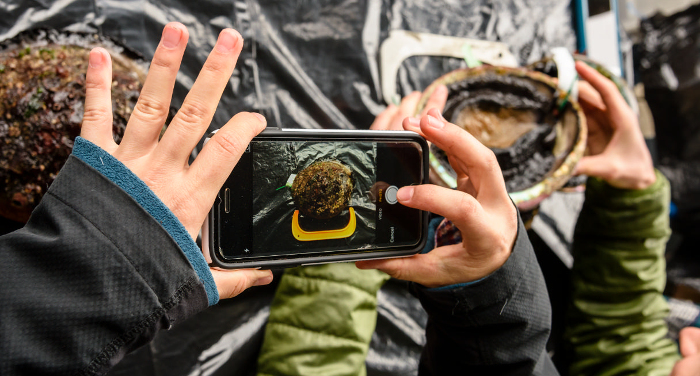Wild capture fisheries supply food and jobs for hundreds of millions of people across the globe. Yet an estimated 68% of global fisheries are overfished, contributing to food insecurity, economic impacts, and an erosion of biodiversity. Ocean health and sustainable fisheries both depend on effective fisheries management.
Effective management of fisheries requires three fundamental elements: data collection, stock assessment and implementation of effective rules and regulations. Innovative approaches and technological solutions such as data-limited assessments, electronic monitoring, and co-management can address these needs, but have yet to be scaled broadly.
California fisheries supply more than 250 species of local seafood. The Conservancy aims to ensure these fisheries are managed sustainably with cutting edge approaches and technology that improve the environmental and economic performance of fisheries, protect habitats and vulnerable species, reduce bycatch, and serve as a model for global fisheries management reform.

Sean P. Fitzgerald, Jono R. Wilson , Hunter S. Lenihan
Despite the economic value of California fisheries, many lack information needed to determine if fishing is occurring at a sustainable level. The Southern California Rock Crab fishery in the Santa…Jono R. Wilson, Serena Lomonico, Darcy Bradley, Leila Sievanen, Tom Dempsey, Michael Bell, Skyli McAfee, Christopher Costello, Cody Szuwalski, Huff McGonigal, Sean Fitzgerald, Mary Gleason
Climate change is amplifying threats to ocean ecosystems and marine fisheries worldwide. In order to respond appropriately in the face of these ocean changes, commercial and recreational…Wilson J. , McGonigal, H., Dempsey, T., Gleason, M., Rienecke, S.
Fisheries management in California is a complex, resource intensive process that is limited by funding and staff capacity. In this report, Conservancy scientists and colleagues identify ways in which…Serena Lomonico, Robert Jones, Torrey Johnson, Sarah Newkirk, Sarah Lummis, Kirk Klausmeyer, John Finger, Terry Sawyer, Richard James
Aquaculture is becoming an increasingly important global food source. With this growth comes urgent, unanswered questions about the interactions of aquaculture operations—both positive and…The Nature Conservancy, Matt Merrifield
Nearly half of the world depends on seafood for their main source of protein. In the Western and Central Pacific, where 60% of the world’s tuna is caught, illegal, unreported, and unregulated…Daniel Ovando, Dawn Dougherty, Jono R. Wilson
No-take marine reserves are a management intervention that can provide long-term fishery benefits. But, impacts of reserve implementation can negatively affect fishermen profits in the short term.…The Nature Conservancy, Jono Wilson
California fisheries, like the red abalone fishery, are facing increasing environmental variation and uncertainty due to climate change, complicating the sustainable management of commercial and…The Nature Conservancy, Jono Wilson
There are thousands of fisheries around the globe that lack the infrastructure, capacity, resources and management techniques to perform conventional assessments and management. We know that fisheries…Brent B. Hughes, Matthew D. Levey, Monique C. Fountain, Aaron B. Carlisle, Francisco P. Chavez, Mary G. Gleason
This comprehensive study of a major California estuary documents the links between nutrient runoff from coastal land use, the health of the estuary as a nursery for young fish, and the abundance of…Gleason M, Feller EM, Merrifield M, Copps S, Fujita R, Bell M, Rienecke S, Cook C
On the Central Coast of California, The Nature Conservancy, Environmental Defense Fund, local fishers and local, state, and federal authorities worked collaboratively to protect large areas of the…Darci Palmquist, Mary Gleason, Matt Merrifield
Kate Labrum, Dwayne Oberhoff
In 2011, the west coast groundfish fishery transitioned into a catch share fishery, or Individual Fishing Quota management system. Under this type of management system, the annual total allowable…James Lindholm, Mary Gleason, Donna Kline, Larissa Clary, Steve Rienecke, Michael Bell
This report summarizes the results of a multi-year study (June 2009 to December 2012) to assess the impacts of bottom trawling on seafloor habitats and associated biological communities. This project…Jennifer Carah, Jason Pelletier
A two-page summary of salmon restoration efforts at the Garcia River Forest on the North Cost of California focusing on the reintroduction of wood in streams as a strategy.